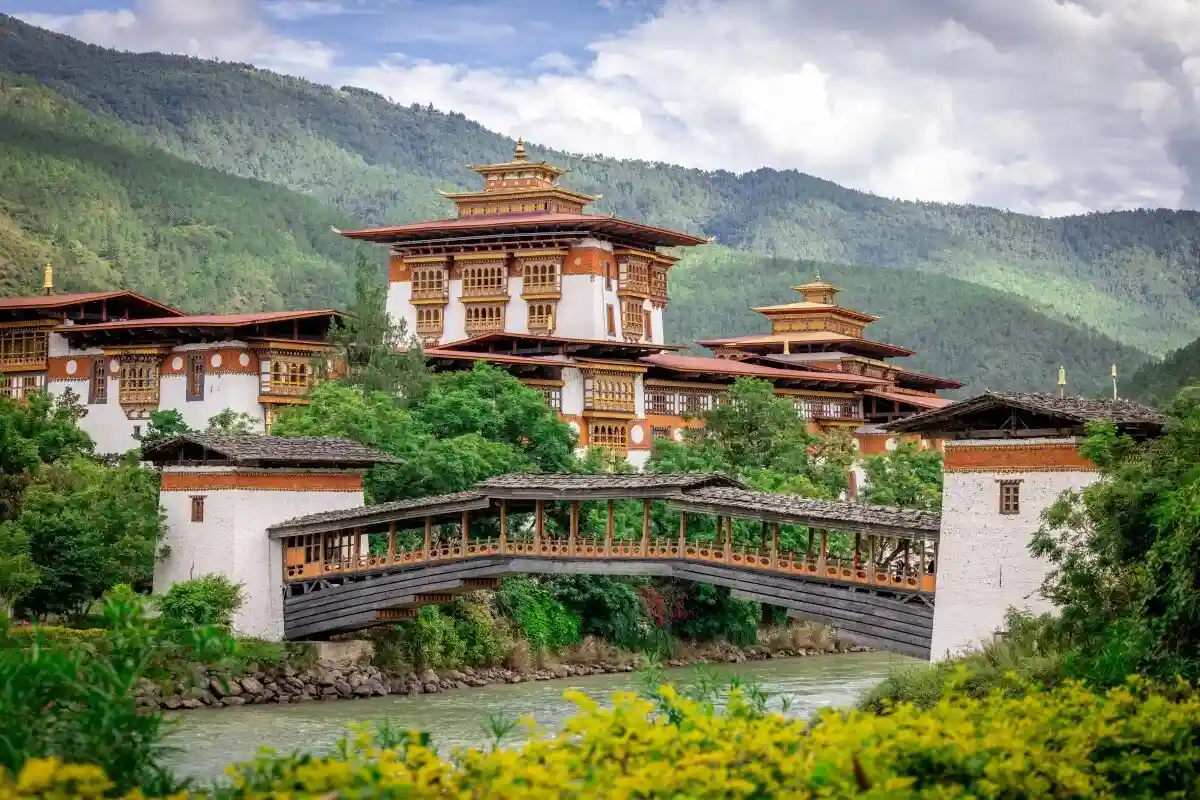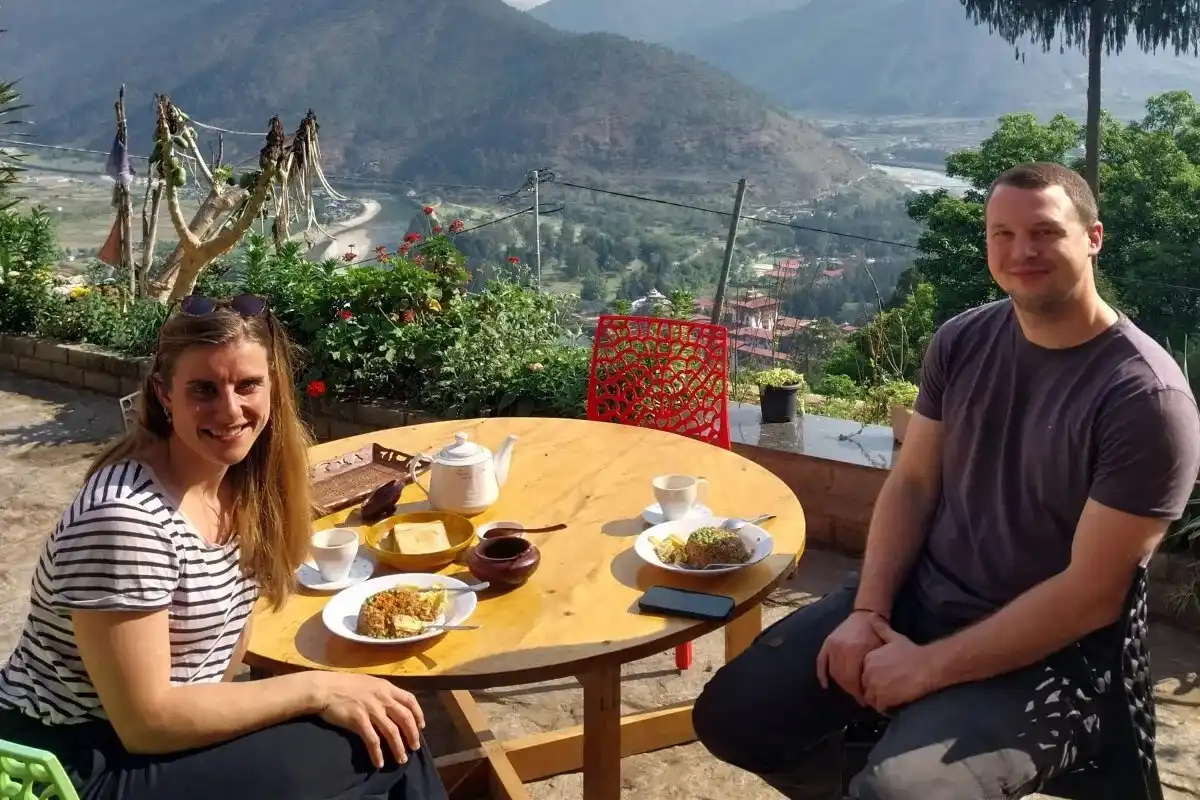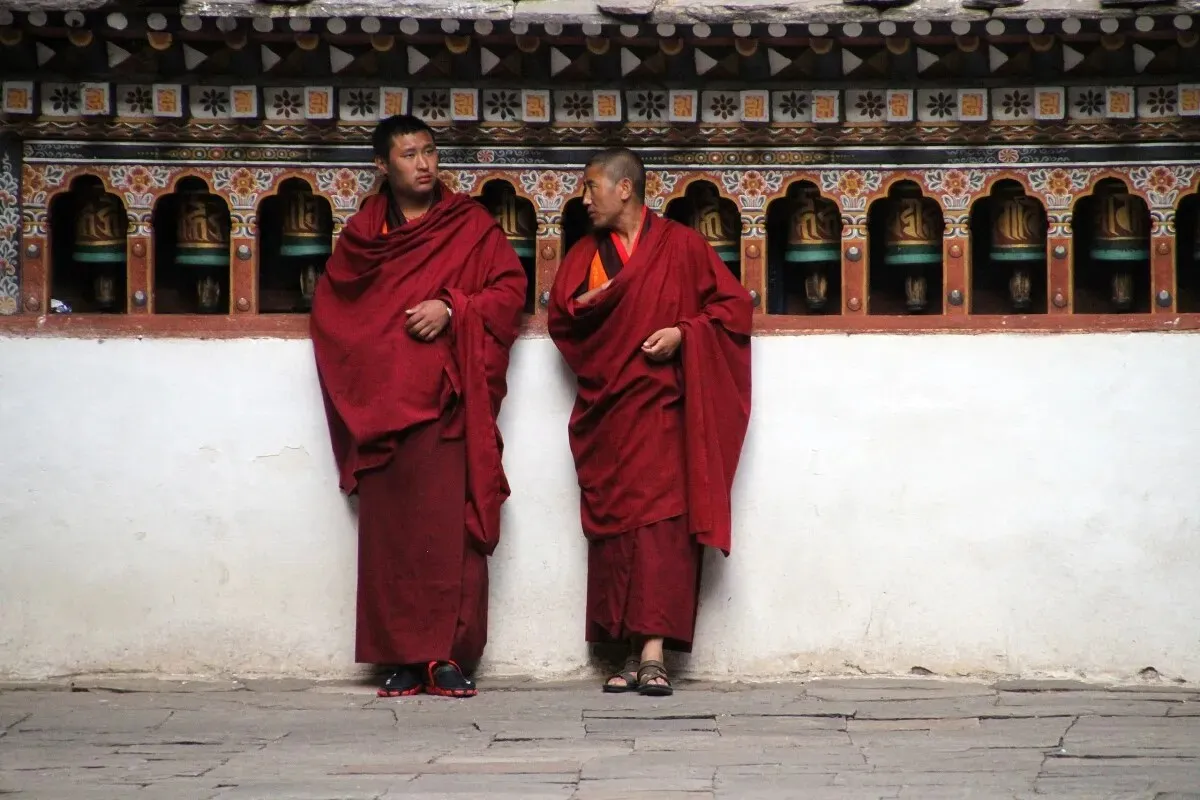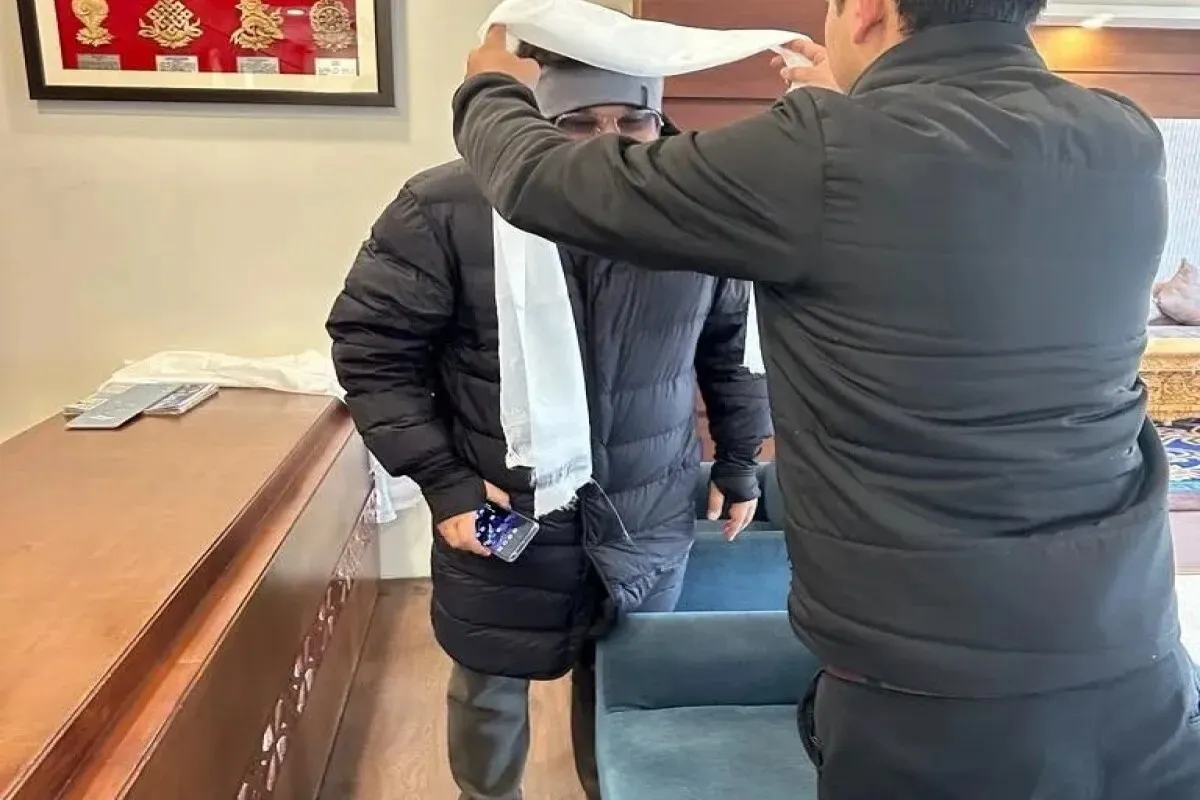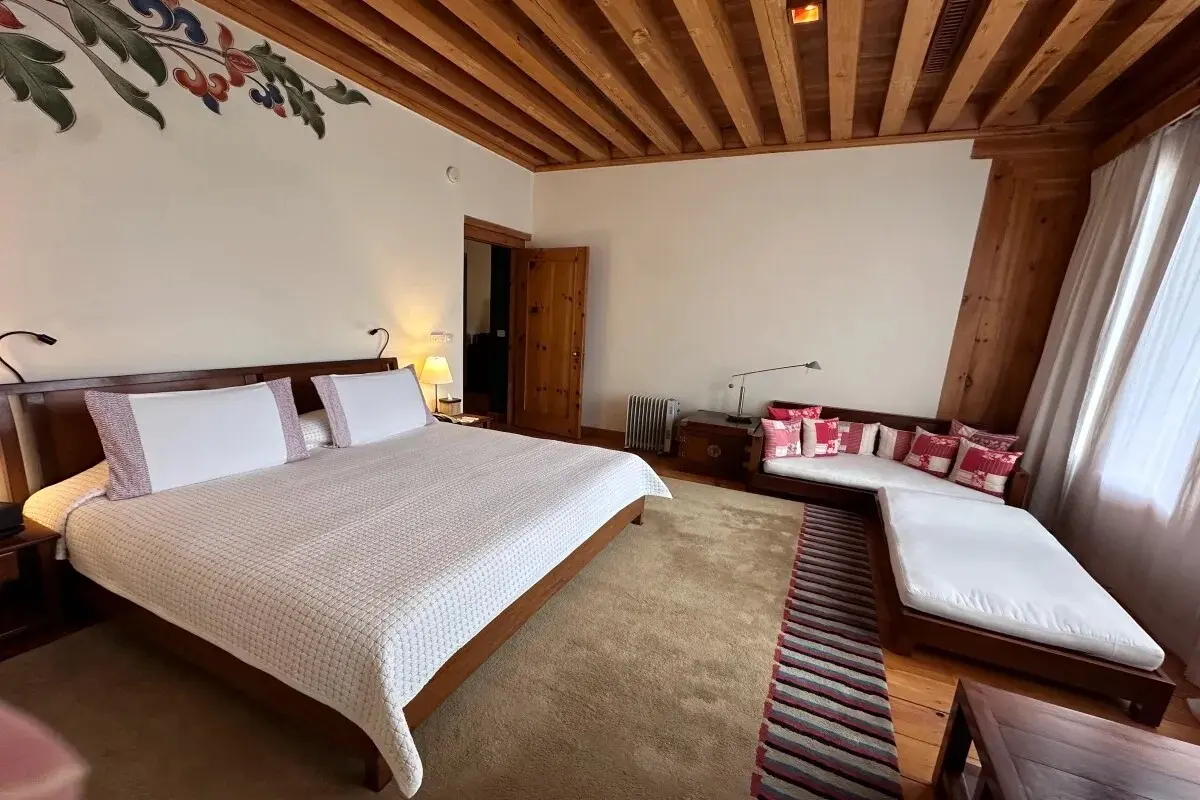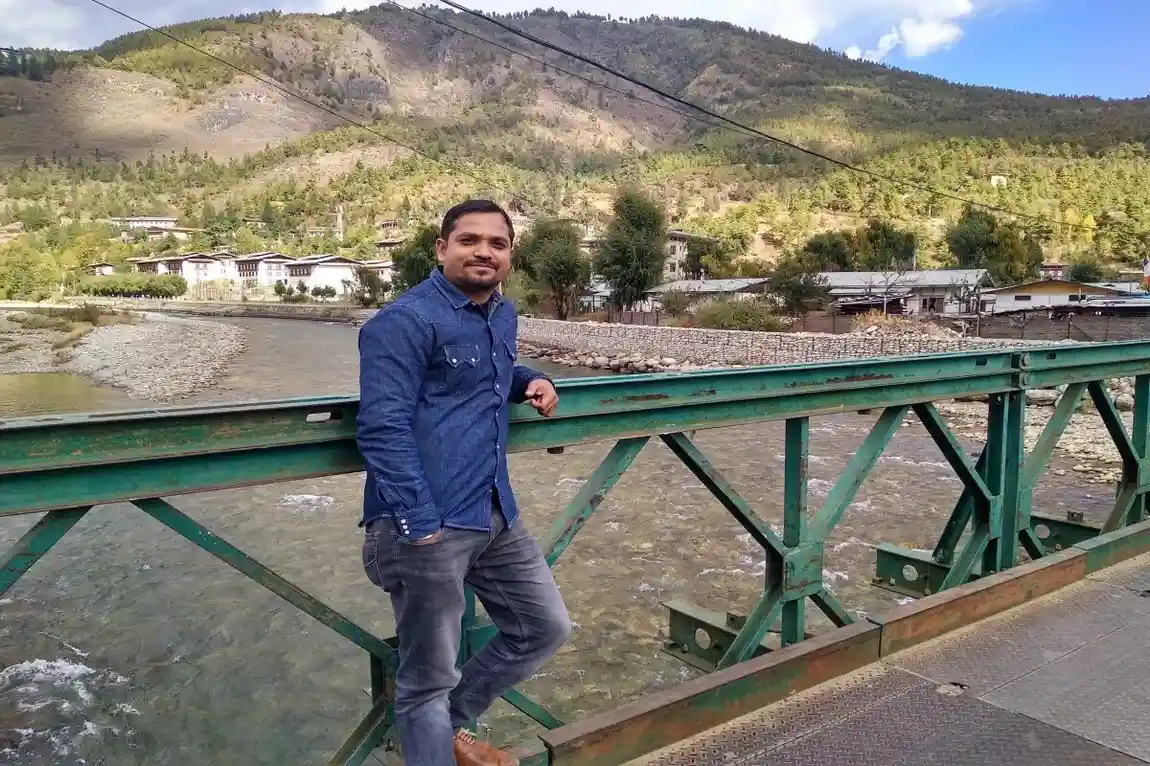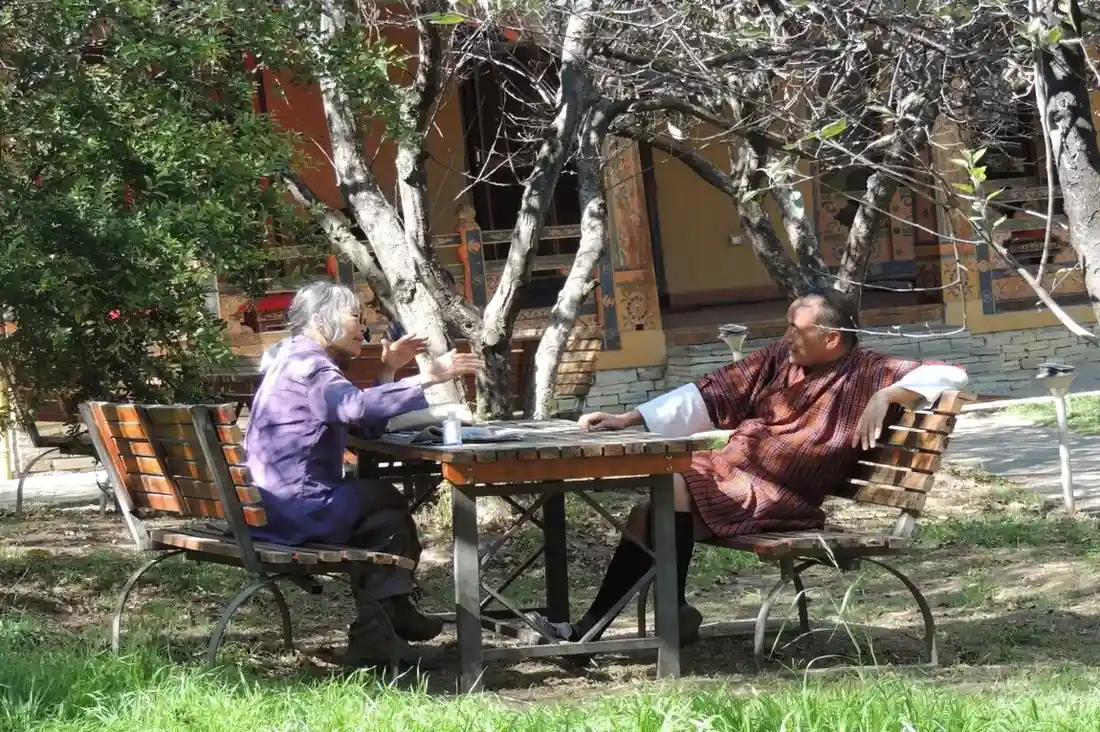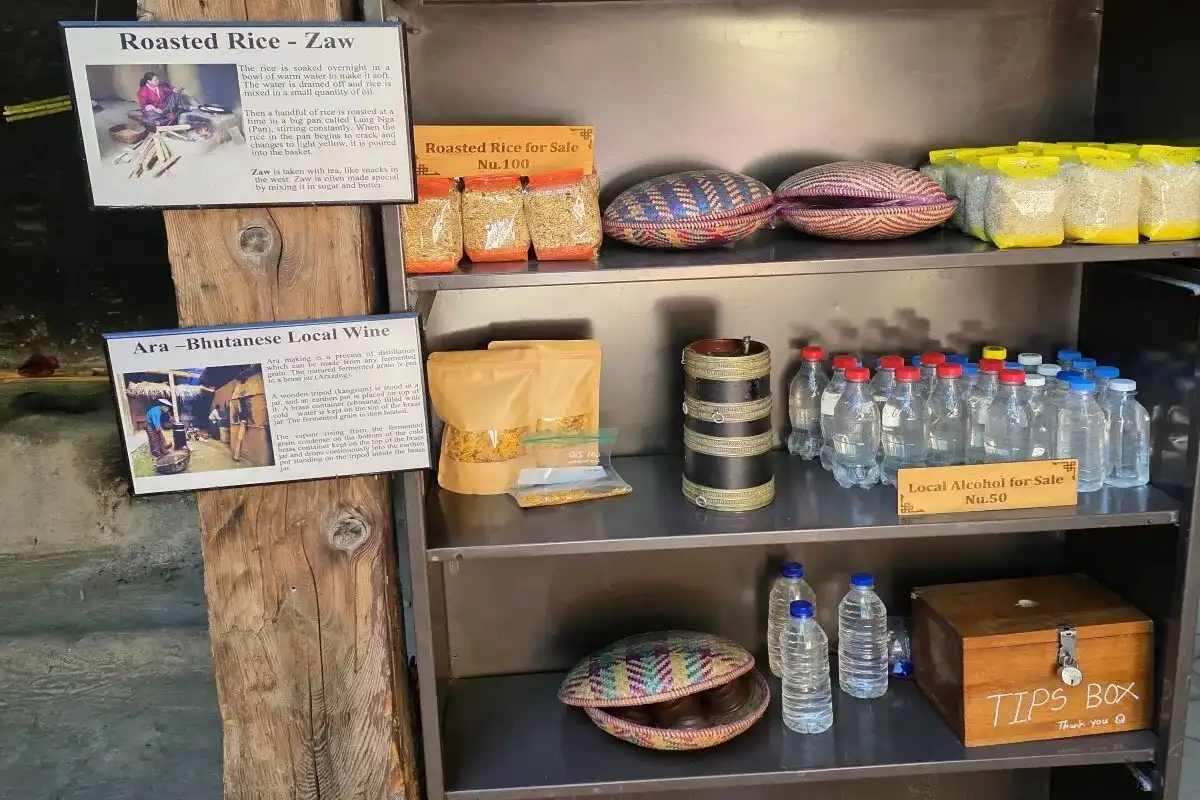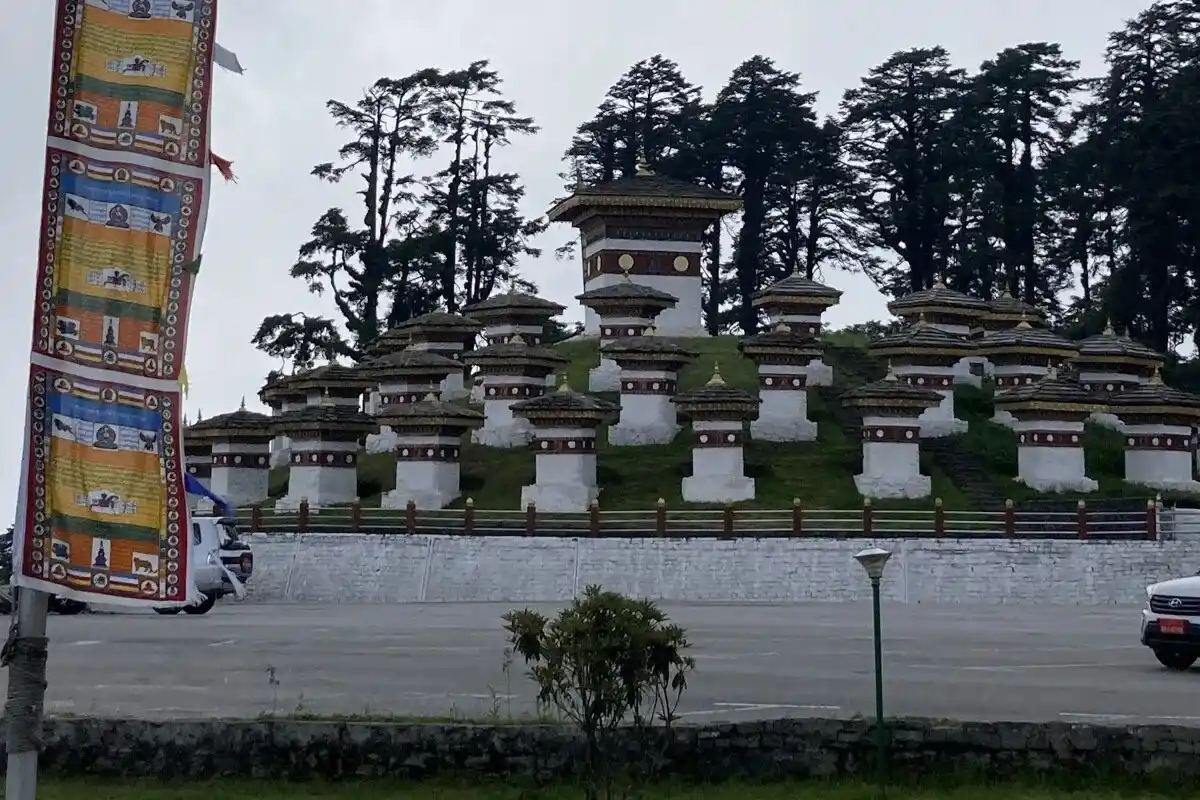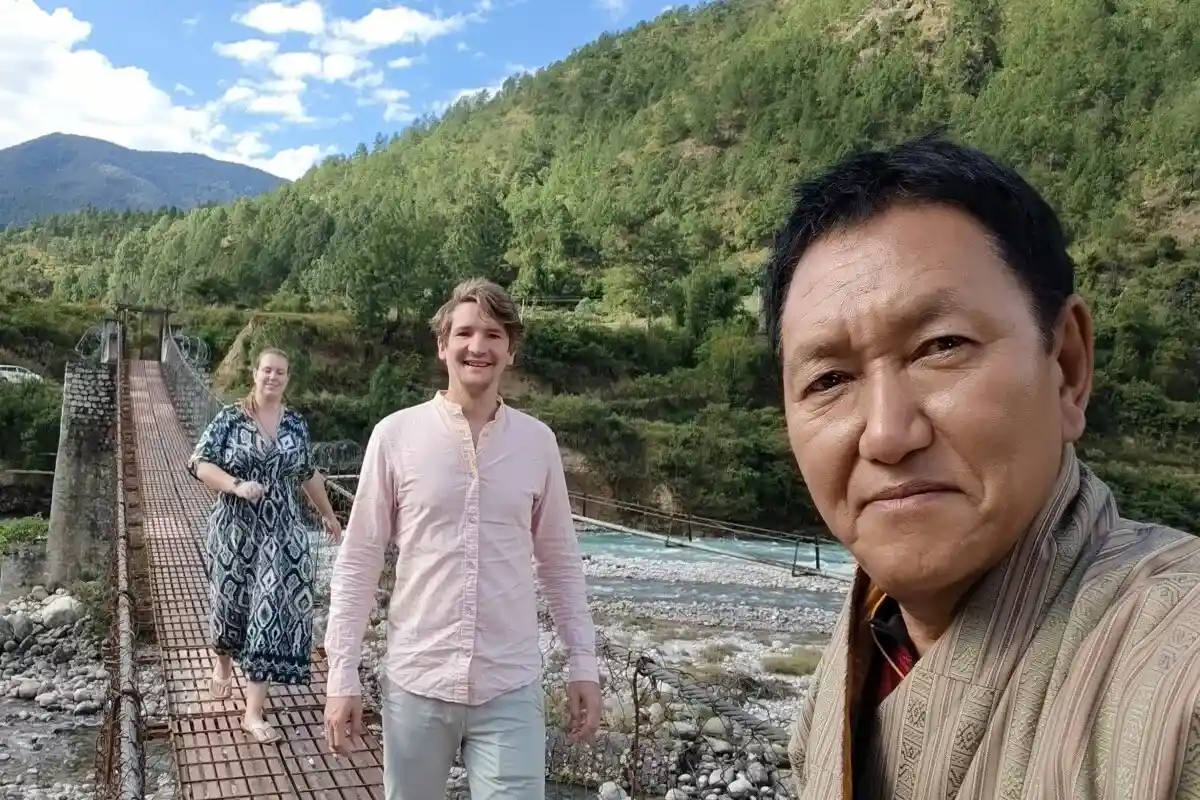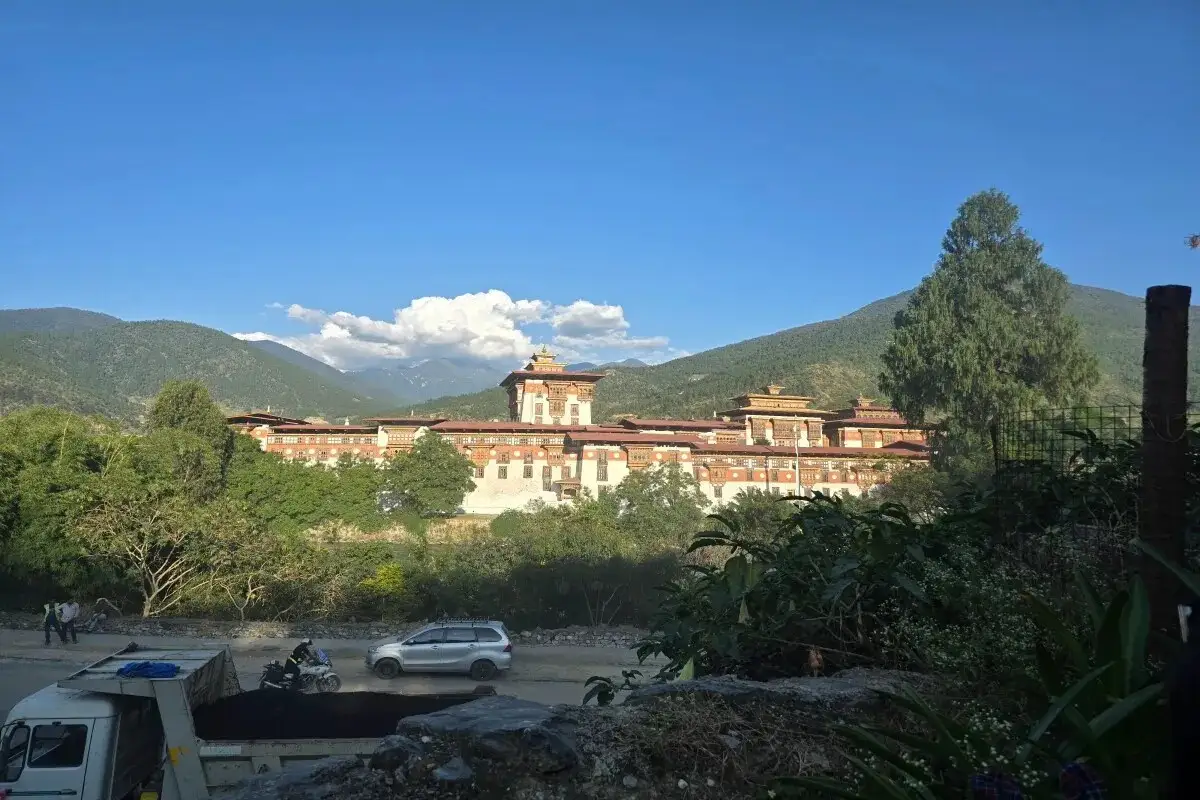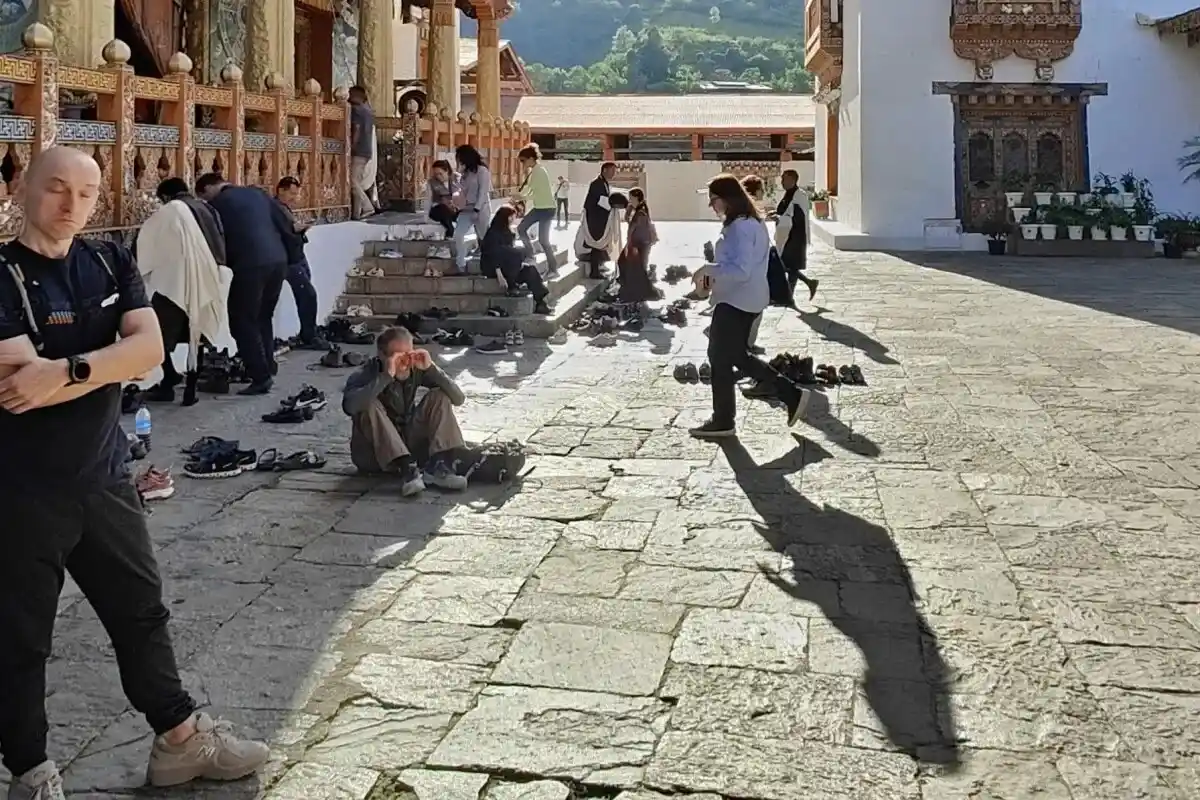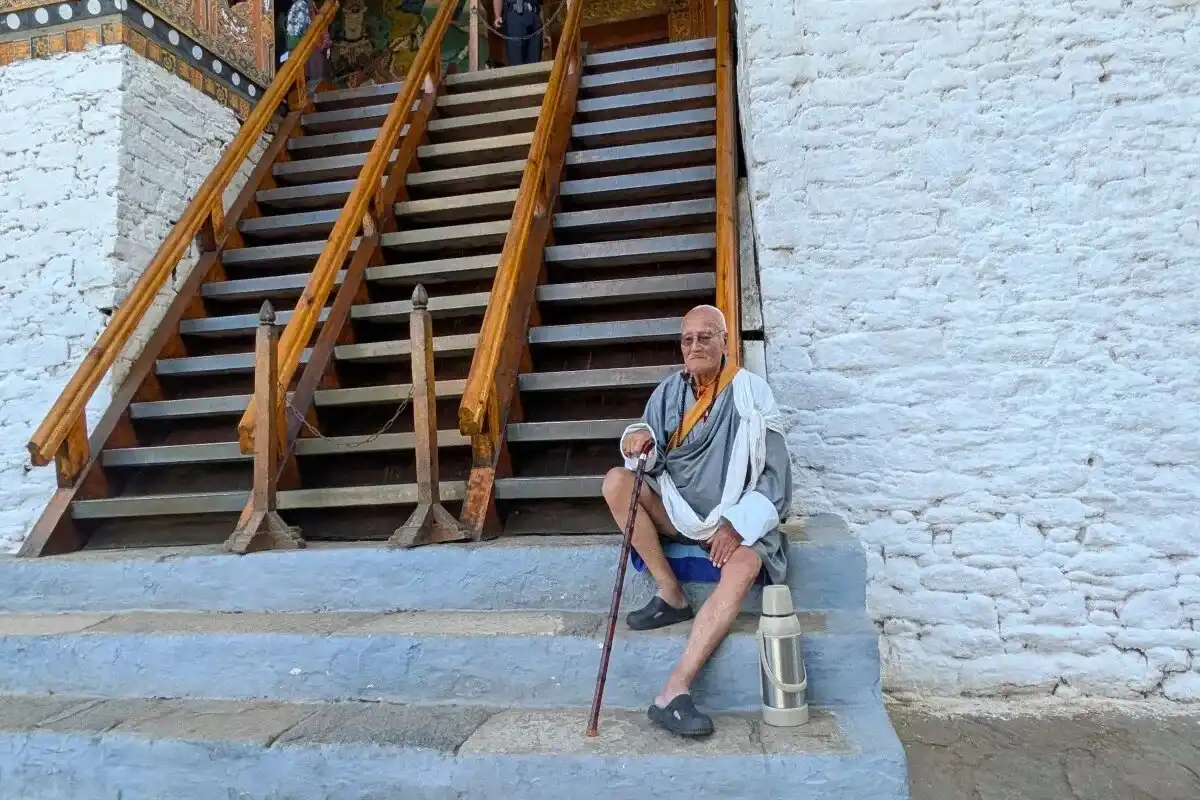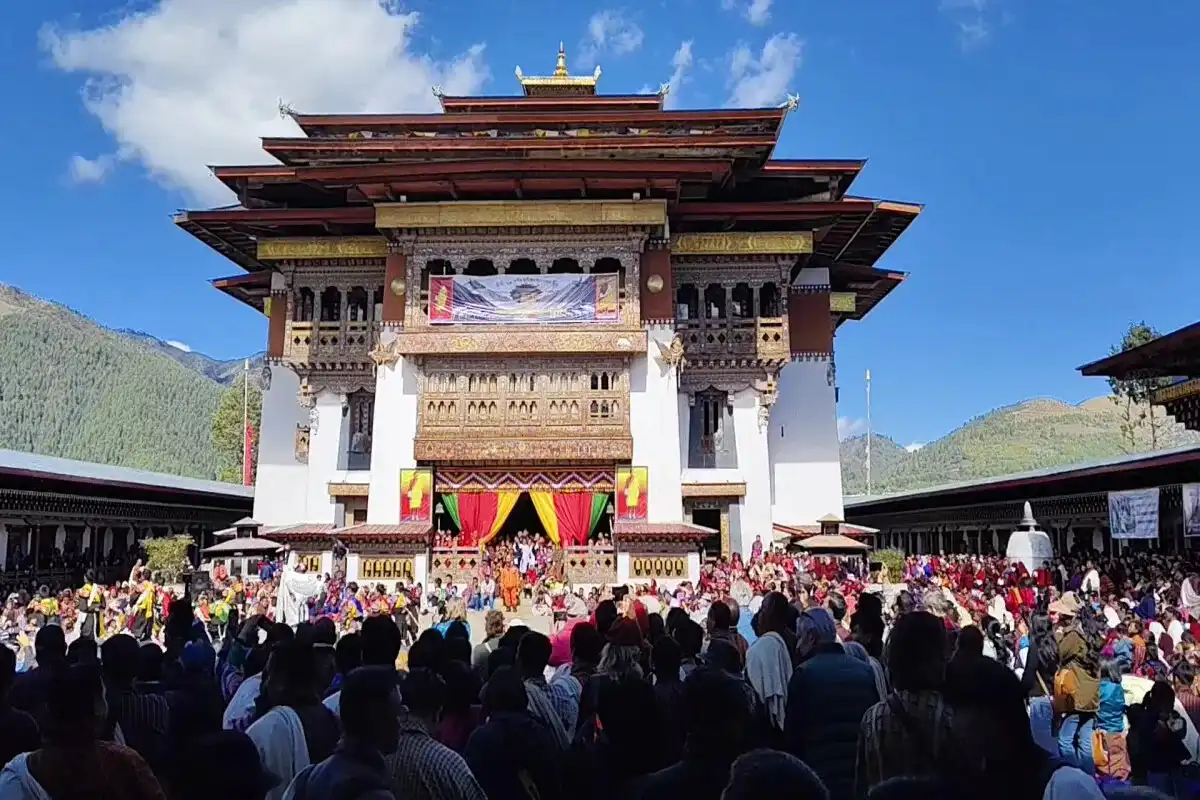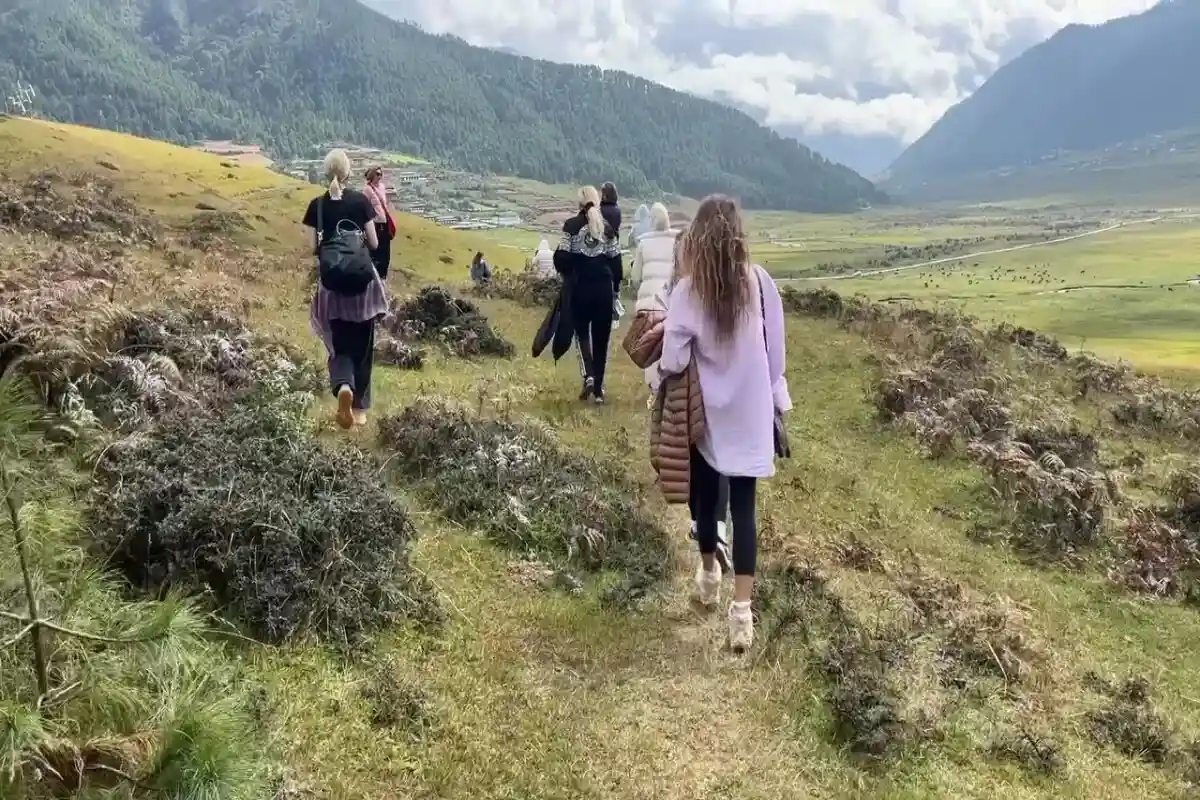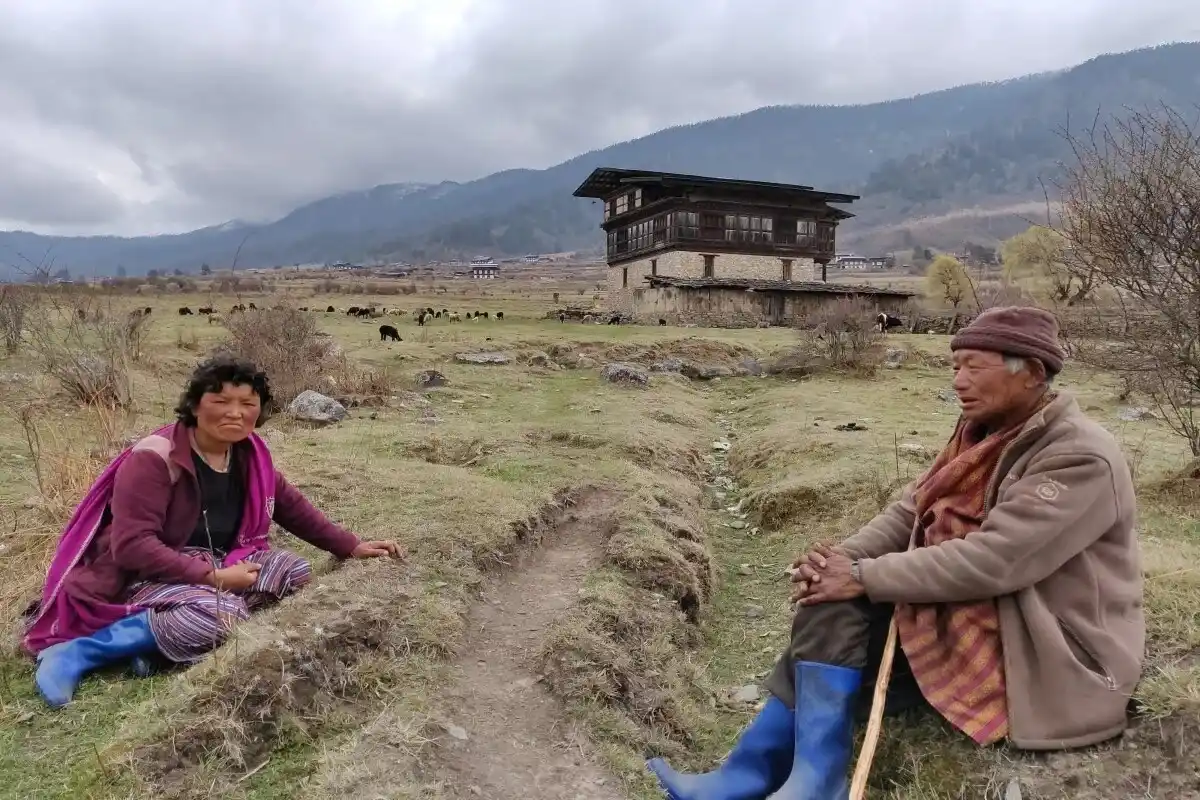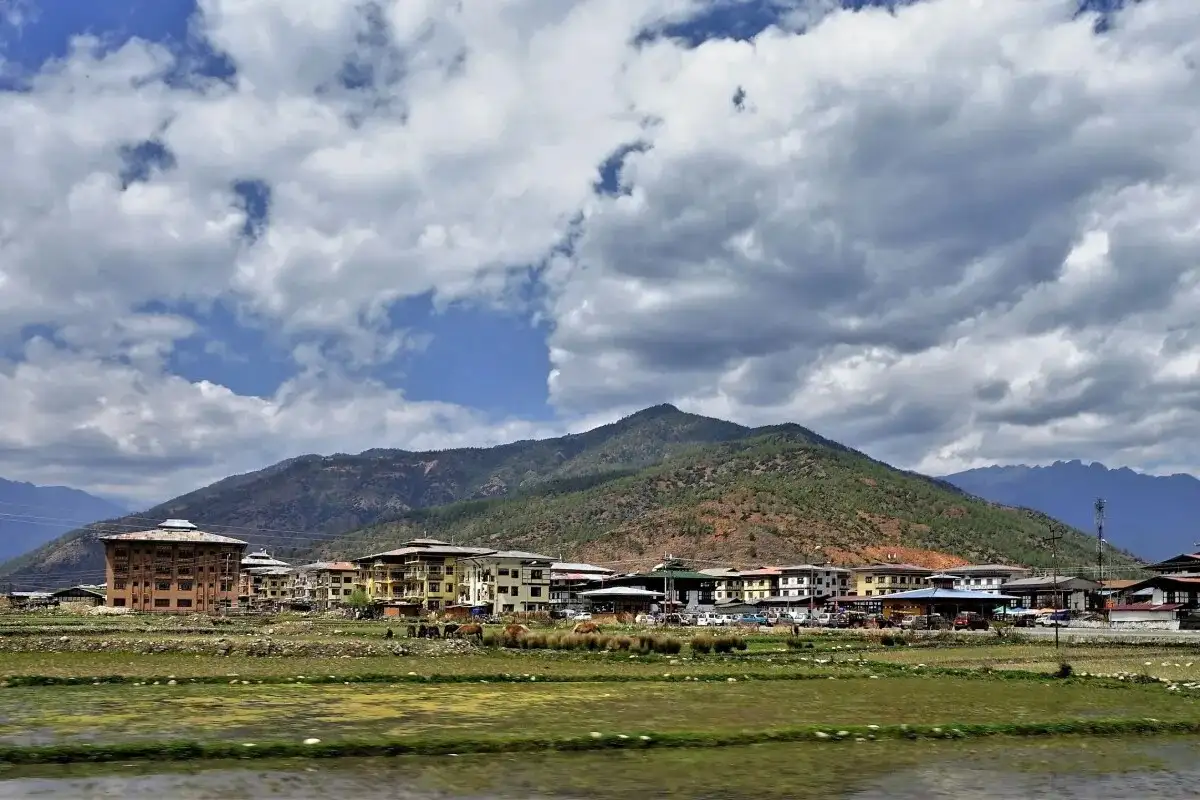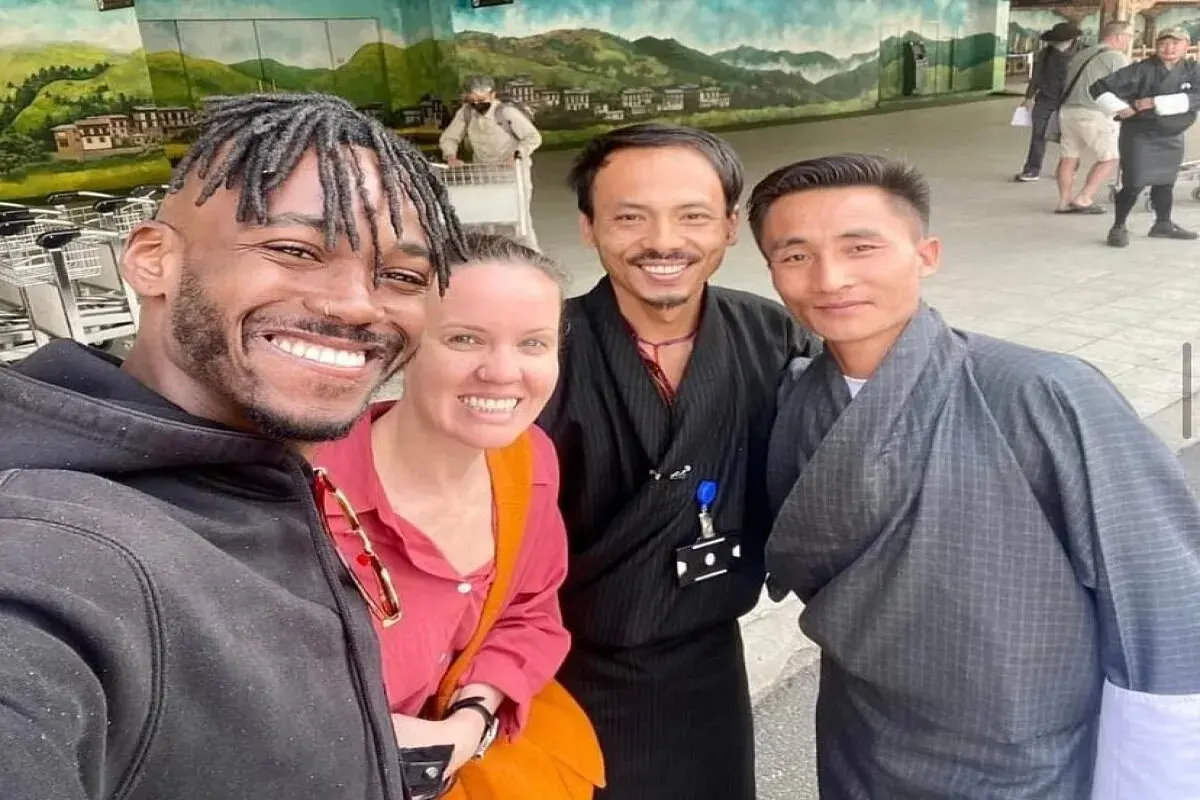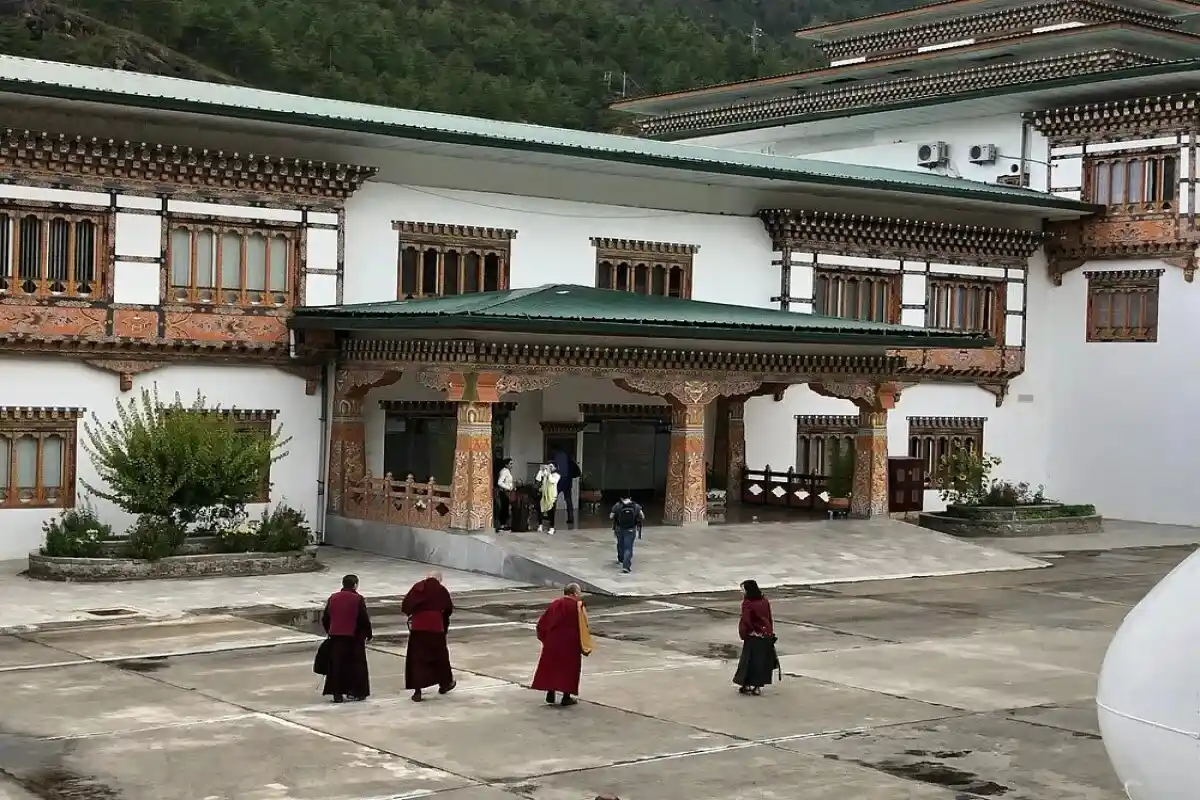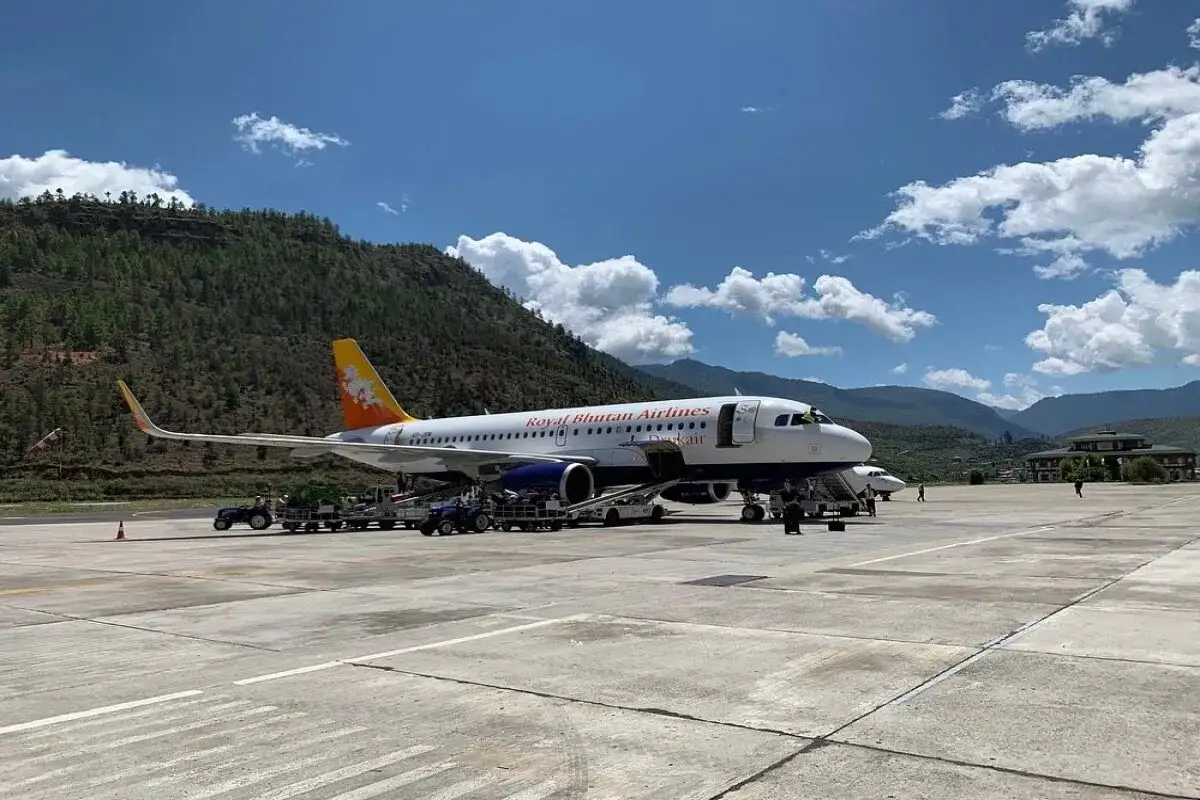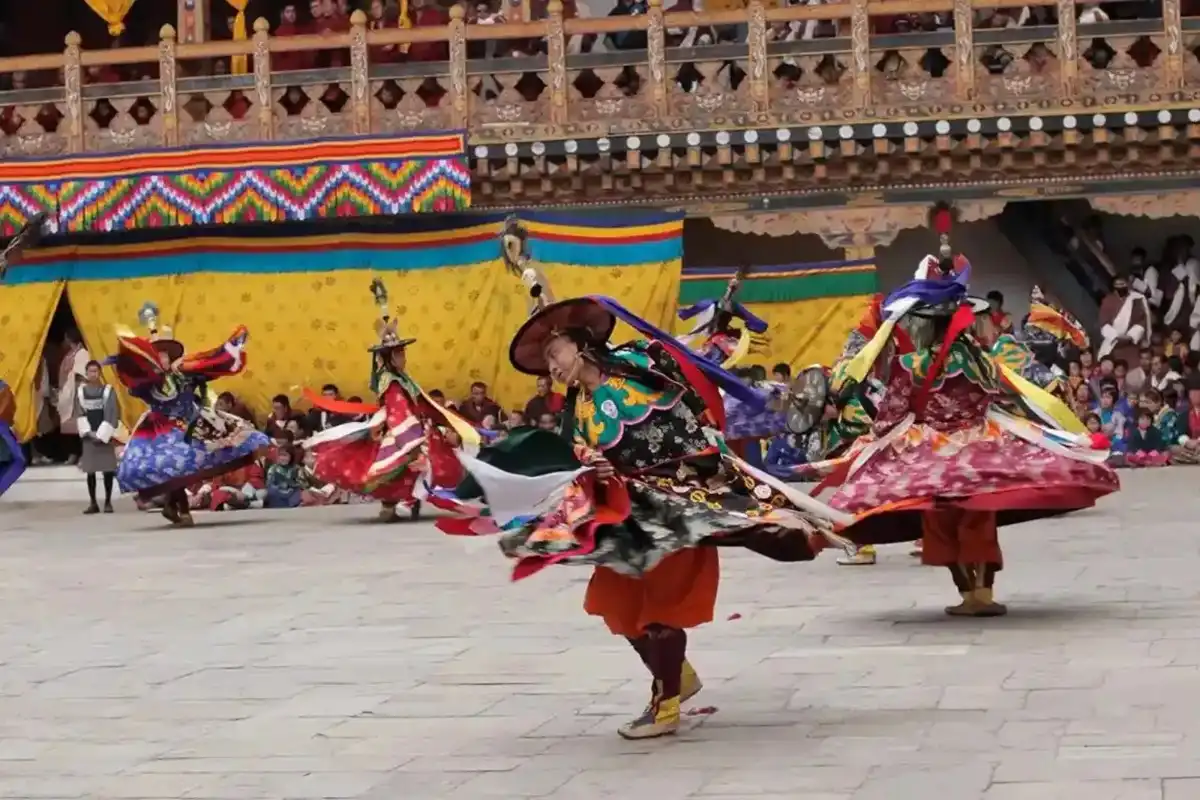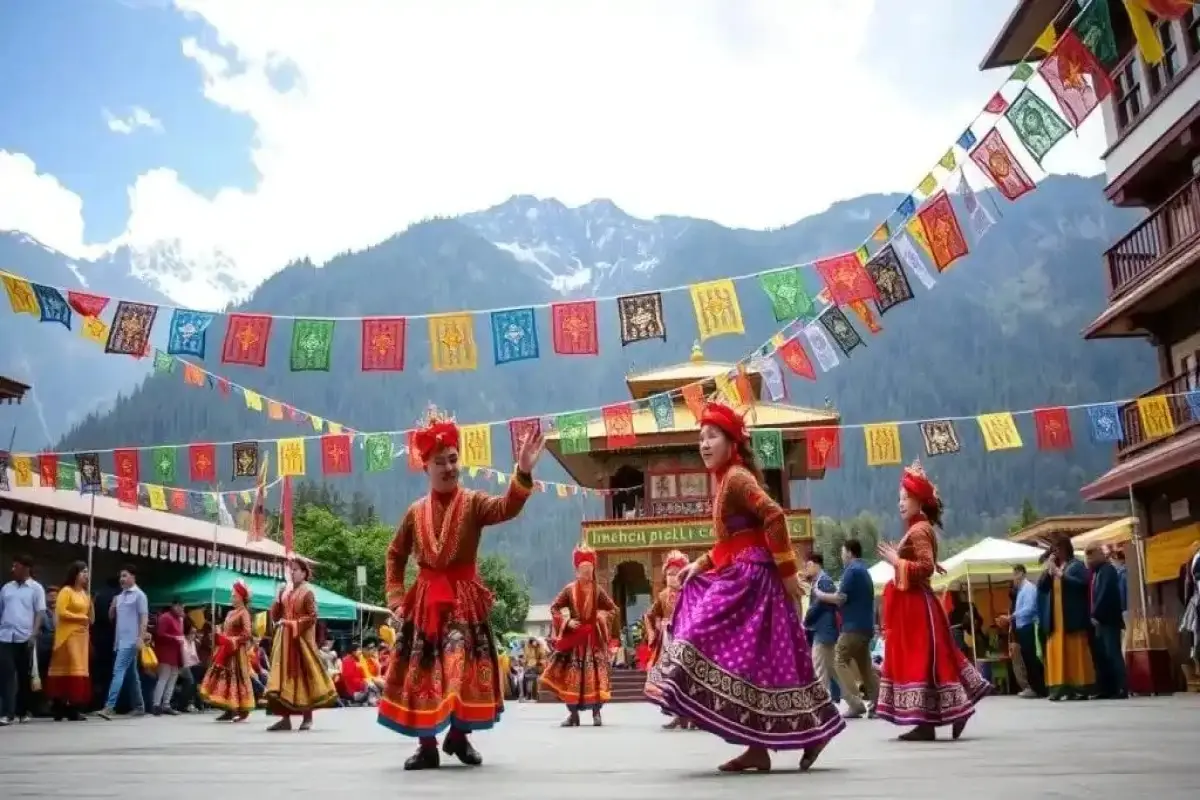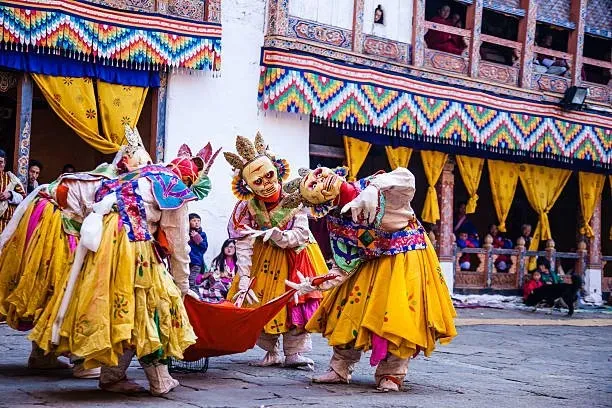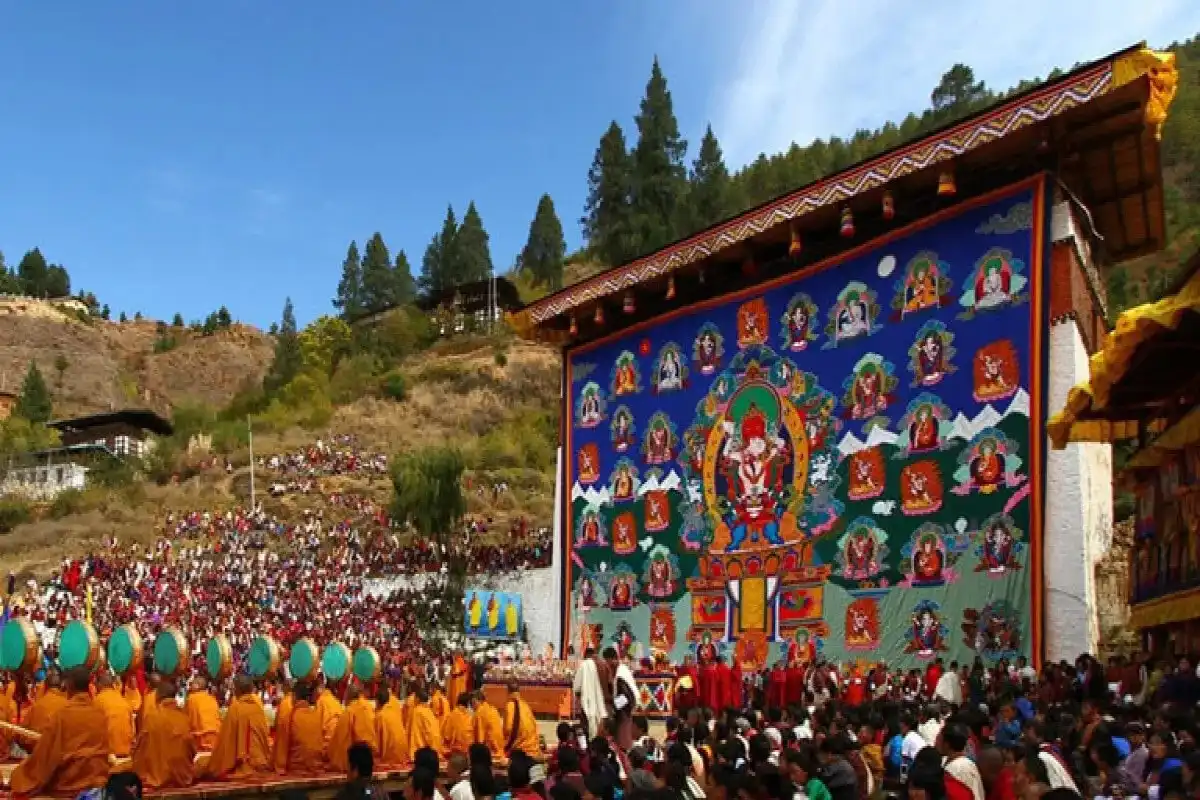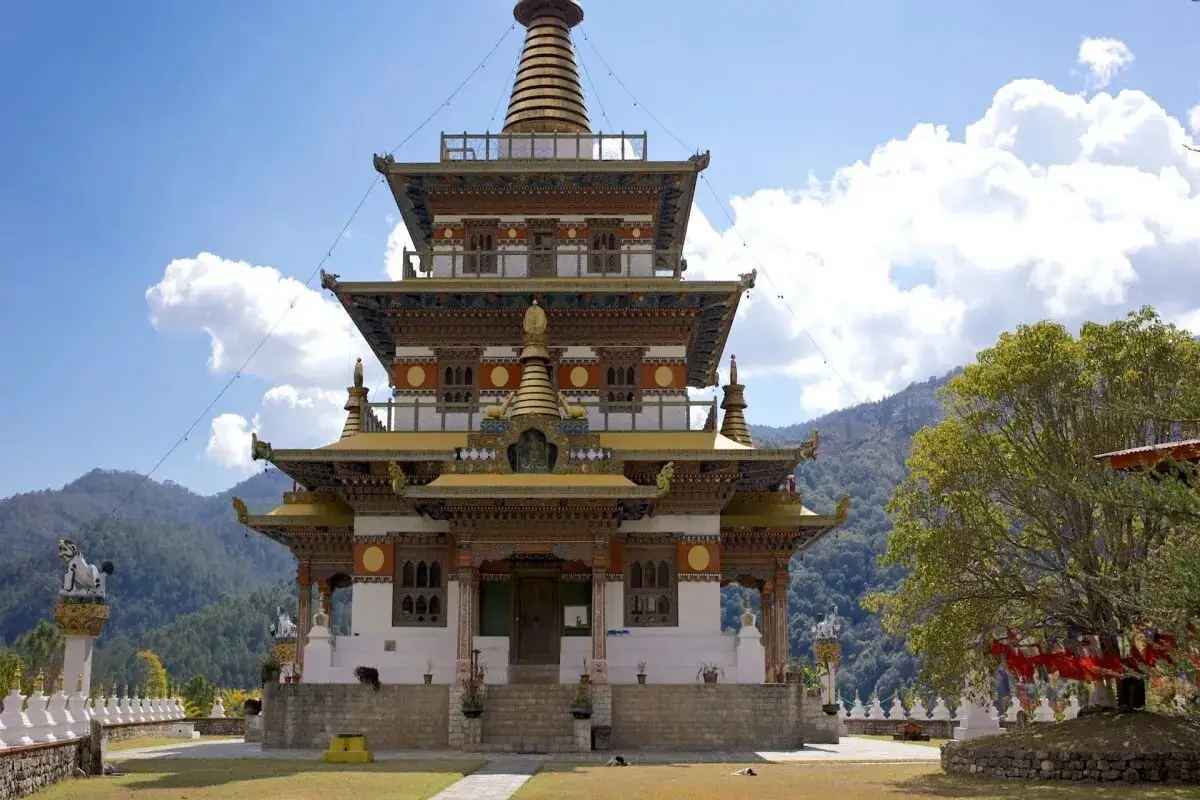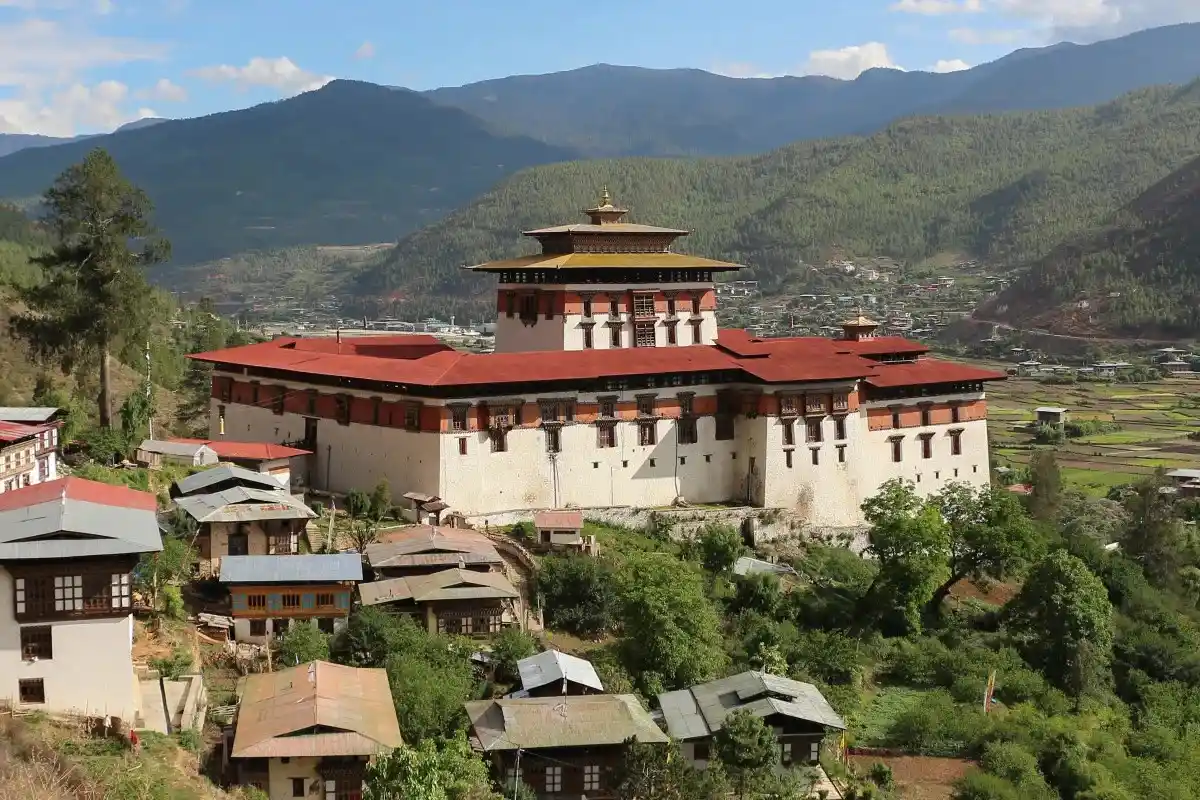Cultural Exploration: Kingdom in the Sky - 7 Days
The 7-day journey uncovers the artistic, cultural, and historical treasures of Bhutan. It includes wonderful experiences from sacred monasteries to breathtaking scenic mountain passes and wonderful architecture. This trip is ideal for cultural explorers looking for immersion in culture, the beauty of nature, and for people who want to learn more about the lifestyle of people living there.
Highlights of the tour
- Explore ancient dzongs in Thimphu and Punakha
- Attend a seasonal local festival or temple ritual
- Visit the traditional arts school and the folk heritage museum
- Engage with locals through crafts, food, and stories
Trip Overview
Bhutan isn’t just a place you visit, it’s a country you feel. Bhutan is often known as the Kingdom in the Sky, where culture and spirituality flow as rivers. This 7-day journey invites every cultural enthusiast and nature lover to visit Bhutan. In this journey, you’ll get to see many sacred monasteries and Buddhist temples, where you can get more knowledge and insights about Bhutan and its history. This trip offers you a great opportunity to witness Bhutan’s living heritage up close. This journey is meant for slowing down, looking closer, and connecting deeply with a culture unlike any other.
Highlights
Discover more about Bhutan’s culture and its history while getting an exclusive view of the Bhutanese people’s lifestyle. Visit iconic dzongs, see the activities of local people there, learn to make authentic Bhutanese dishes, and learn more about Bhutanese arts and rituals.
Explore ancient dzongs in Thimphu and Punakha
Dzongs are the heart of Bhutan’s culture. You will find many stunning dzongs in Thimpu such as Tashichho Dzong, an architectural marvel that houses government offices and monastic bodies. Here, you can explore through the trails and get lost in the beauty of Bhutan. Similarly, in Punakha, you can explore the Punakha Dzong. This dzong is awesome, filled with natural beauty everywhere. This dzong is built at the confluence of the Pho Chhu and Mo Chhu rivers. It reflects both strategic military genius and deep spiritual significance.
Attend a seasonal local festival or temple ritual
Bhutanese festival reflects the culture, preserved traditions, colour, symbolism, and devotion. These event tends to bring all communities together, dressed in their traditional clothes and jewelry. Your visit could coincide with the festivals held at Thimphu or Punakha, and there are also smaller village festivals that are just as interesting. The traditional music, burning incense, and dancing all create a wonderful experience. You can also see the ritual temple blessings and other ceremonies that involve blessings.
Visit the traditional arts school and the folk heritage museum
Bhutan is one of the few countries where traditional art and folk heritages are still conserved. At the National Institute for Zorig Chusum, which is often called the Traditional Arts School. Here, students are rigorously trained in Bhutan’s 13 traditional arts and crafts, known as Zorig Chusum. These include thangka painting, sculpture, wood carving, embroidery, and more. Similarly, the Folk Heritage Museum features a lovely, maintained traditional farmhouse that invites people to experience in-depth life of rural Bhutanese families. Visitors can see the tools used in ancient households, farming, and cooking. All these things help visitors to understand the cultural diversity and the simple way of life in Bhutan.
Engage with locals through crafts, food, and stories
While visiting Bhutan, the experience that you must not miss is to engage with locals and see the handmade crafts, food, and their day-to-day life stories of Bhutanese people. On this journey, you will visit the villagers’ homes, the craftsmen’s shops, and the community centers, where their hospitality is rich and their culture is wholesome. Ema Datshi is one of the famous Bhutanese meals. You can learn to prepare this food while talking with the local people. You can also learn to cook other foods, alongside seeing the farming of fresh vegetables. You will even be able to join the older locals as they share captivating folk tales. In the local shops, you will be shown pot and basket making and weaving by skilled craftsmen who have spent many years perfecting their crafts.
Conclusion
Your 7-day cultural exploration of Bhutan is more than just a journey; it gives you a sense of peace, blessings, and more insights about the people of Bhutan and their culture. While walking through the trails of Bhutan, talking with local villagers, sharing food and experience with them, you’ll carry home more than just photographs; you’ll have new connections and greater respect for the Kingdom of Sky. You’ll be leaving Bhutan with a heavy heart and the urge to visit Bhutan very soon for the next time.
Bhutan isn’t just a place you visit, it’s a country you feel. Bhutan is often known as the Kingdom in the Sky, where culture and spirituality flow as rivers. This 7-day journey invites every cultural enthusiast and nature lover to visit Bhutan. In this journey, you’ll get to see many sacred monasteries and Buddhist temples, where you can get more knowledge and insights about Bhutan and its history. This trip offers you a great opportunity to witness Bhutan’s living heritage up close. This journey is meant for slowing down, looking closer, and connecting deeply with a culture unlike any other.
Highlights
Discover more about Bhutan’s culture and its history while getting an exclusive view of the Bhutanese people’s lifestyle. Visit iconic dzongs, see the activities of local people there, learn to make authentic Bhutanese dishes, and learn more about Bhutanese arts and rituals.
Explore ancient dzongs in Thimphu and Punakha
Dzongs are the heart of Bhutan’s culture. You will find many stunning dzongs in Thimpu such as Tashichho Dzong, an architectural marvel that houses government offices and monastic bodies. Here, you can explore through the trails and get lost in the beauty of Bhutan. Similarly, in Punakha, you can explore the Punakha Dzong. This dzong is awesome, filled with natural beauty everywhere. This dzong is built at the confluence of the Pho Chhu and Mo Chhu rivers. It reflects both strategic military genius and deep spiritual significance.
Attend a seasonal local festival or temple ritual
Bhutanese festival reflects the culture, preserved traditions, colour, symbolism, and devotion. These event tends to bring all communities together, dressed in their traditional clothes and jewelry. Your visit could coincide with the festivals held at Thimphu or Punakha, and there are also smaller village festivals that are just as interesting. The traditional music, burning incense, and dancing all create a wonderful experience. You can also see the ritual temple blessings and other ceremonies that involve blessings.
Visit the traditional arts school and the folk heritage museum
Bhutan is one of the few countries where traditional art and folk heritages are still conserved. At the National Institute for Zorig Chusum, which is often called the Traditional Arts School. Here, students are rigorously trained in Bhutan’s 13 traditional arts and crafts, known as Zorig Chusum. These include thangka painting, sculpture, wood carving, embroidery, and more. Similarly, the Folk Heritage Museum features a lovely, maintained traditional farmhouse that invites people to experience in-depth life of rural Bhutanese families. Visitors can see the tools used in ancient households, farming, and cooking. All these things help visitors to understand the cultural diversity and the simple way of life in Bhutan.
Engage with locals through crafts, food, and stories
While visiting Bhutan, the experience that you must not miss is to engage with locals and see the handmade crafts, food, and their day-to-day life stories of Bhutanese people. On this journey, you will visit the villagers’ homes, the craftsmen’s shops, and the community centers, where their hospitality is rich and their culture is wholesome. Ema Datshi is one of the famous Bhutanese meals. You can learn to prepare this food while talking with the local people. You can also learn to cook other foods, alongside seeing the farming of fresh vegetables. You will even be able to join the older locals as they share captivating folk tales. In the local shops, you will be shown pot and basket making and weaving by skilled craftsmen who have spent many years perfecting their crafts.
Conclusion
Your 7-day cultural exploration of Bhutan is more than just a journey; it gives you a sense of peace, blessings, and more insights about the people of Bhutan and their culture. While walking through the trails of Bhutan, talking with local villagers, sharing food and experience with them, you’ll carry home more than just photographs; you’ll have new connections and greater respect for the Kingdom of Sky. You’ll be leaving Bhutan with a heavy heart and the urge to visit Bhutan very soon for the next time.
Short Itinerary
Arrive in Paro, relax, explore Paro town and enjoy welcome tea at a farmhouse
Drive to Thimphu, visit Folk Heritage Museum and Traditional Arts School, explore Tashichho Dzong
Drive to Punakha via Dochula Pass, enjoy birdwatching and evening walk by Pho Chhu river
Visit Punakha Dzong and longest suspension bridge, village walk & Bhutanese cooking class
Travel to Phobjikha Valley, visit Gangtey Monastery, hike the Gangtey Nature Trail
Return to Punakha, join incense-making or mask-carving workshop, butter lamp prayer session
Return to Paro, visit National Museum or do last-minute shopping, departure from Bhutan
Cultural Exploration: Kingdom in the Sky Itinerary
After you arrive in Paro, you’ll be surrounded by deep green valleys, peace and beauty all around you. After, you’ll be greeted by your local guides and people around you. After you are greeted, you’ll be taken to the hotel where you are staying. After checking in, you can rest and let go of all your tiredness. In the afternoon, enjoy a gentle walk around the historic Paro town, known for its charming shops and architecture. You’ll visit a traditional farmhouse for a welcome tea session. In the evening, you can go for the orientation session taken by your guides, which explains the itinerary of the rest journey. You’ll have dinner at the place where you are staying.
After breakfast, take note of the scenic view of the pine-clad mountains of Bhutan, the country’s capital city, Thimphu, nestled in the valley. While in the city, your first cultural stop will be the Folk Heritage Museum, where Bhutan’s history will be introduced to you in the form of a revitalized countryside home depicting the Bhutanese lifestyle. From there, make your way to the National Institute for Zorig Chusum, more popularly known as the Traditional Arts School. There, students learn the nation’s 13 traditional crafts, which include thangka painting and wood carving. In the afternoon, head over to Tashichho Dzong, which contains the throne room and the central monastic body. It is home to a wonderful fortress. In the evening, appreciate the scenic view of the city and do not miss the local market to get some handicraft souvenirs. Enjoy your dinner and stay overnight in Thimphu.
After breakfast, today you’ll depart from Thimphu to Punakha. In this ride, you’ll get to see the famous Douchla Pass. This journey consists of the various scenic beauties of nature, which you can capture throughout the day. Here you’ll also get to feel the change in climate as you pass from temperate forest zones to more sub-tropical climates as you move closer to Punakha. This forest is a major habitat for many birds, so you can keep your binoculars ready here. You’ll stop midway for lunch here. As you move close towards Punakha, the climate becomes warmer and greener, making the habitat perfect for diverse bird species. Upon arrival in Punakha, check into your hotel, and you can leave for an evening walk towards the Pho Chhu riverbanks, where you can relax and take pleasure in seeing nature.
You’ll start your day by visiting the iconic Punakha Dzong. Punakha Dzong is also known as the "Place of Great Happiness." This fortress is between the confluence of two rivers and is famous for its carved woodwork. This place has also played a historical role in Bhutan’s monarchy. Afterwards, you can cross the longest bridge in Bhutan. This place offers you a view of the valleys and is decorated with prayer flags. Later, you can stroll around villages where you can interact with elderly people. You can try pounding rice, making incense, or spinning the yarn. In the afternoon, you can engage in cooking classes , where you can learn to prepare authentic Bhutanese dishes and share your experiences with locals.
Begin your day by driving through the sacred Phobjikha valley. This district is a glacial valley surrounded by pine trees. This is also a winter habitat for the black-necked cranes. When you visit, see the serene Gangtey Monastery. This is one of the oldest Nyingma Monasteries in Bhutan. You can participate in the monks' prayers, where you can receive a blessing. Later, you can go for a gentle hike along the Gangtey Nature Trail, where you can see the patches of rhododendrons, local villages, and soft meadows. You might see some prayer wheels and chortens or some yaks grazing peacefully. Spend the evening in a guesthouse and savor a Bhutanese dinner.
After breakfast, you can begin your journey back to Punakha. After reaching Punakha, you can rest in the homestay. Later, with the help of your local guide, you can participate in the mask-carving or incense-making activities while learning with skilled artisans. It is a hands-on experience to learn the symbolism behind these spiritual objects. Later, in the evening, you can experience the local prayer session or butter lamp offering session, where you can get blessings with the monks, hear the monks chanting the prayers, and the environment is filled with the beautiful smell of incense. Today, you’ll have dinner in the same place where you are staying.
Depending on the time of your flight, you can go for some last-minute shopping in Paro. If you have already completed all your shopping, you can go to see the National Museum of Bhutan, which is located in the historic Ta Dzong. After visiting, you can return to your hotel, now you will be taken to the airport by your guides after having a heart-warming farewell. With the cultural and spiritual insight of Bhutan, you’ll be leaving this place with a heavy heart and lots of respect for the place.
Know Before You Travel
-
Things to do during this trip:
Experience incense-making or mask-carving workshops
Bhutan has many other spiritual decor such as incense making. You can participate in these activities where incense is made. It is considered one of the main items needed for temple works and worship. Here, you’ll grind herbs, roots, and medicinal herbs. The local people in the market will teach you the value of these incense sticks, which are filled with natural herbs. Similarly, you can get involved in mask-carving workshops. This mask-carving workshop will teach you the importance of each colour and curve. This workshop not only teaches you techniques but also shows the cultural impact of these things, why these objects matter, and how they connect to Bhutanese life.
Attend a local prayer session or butter lamp offering
Bhutan is very famous for its spiritual beliefs. One of the best ways to get yourself immersed in this spiritually significant place is to get yourself involved in a morning prayer session or a butter lamp offering session. This takes place in the nearby monasteries or stupas, where monks chant their prayers, and serenity is fully surrounded in the atmosphere. The smell of burning yak butter and incense fills the room as you set down your lamp with quiet emotions. You can get blessings from monks or head lamas, and travelers can get protection and well wishes. It’s a simple, yet deeply meaningful, act of spiritual engagement that a lot of travelers cherish.
Walk through ancient rhododendron trails in Phobjikha
Phobjikha Valley is a beautiful place that is home to many rare animals and birds. The birds, such as the black-necked crane, are found here. The Gangtey Nature trails unfold a lot of beautiful scenery filled with rhododendron forests, which almost feels like you are seeing a canvas painting in front of your eyes. Here you may pass chortens, prayer wheels, and lots of stupas and monasteries. You can also spot some of the yaks grazing in the fields, farming, and planting seeds in the fields, which adds a charm to the journey.
Taste local cuisine like Ema Datshi and Suja
Bhutanese cuisine is a rich fusion of different flavours, local ingredients, and warm hospitality. A must-try dish in Bhutan is Ema Datshi. It is a dish made from chillies and cheese and chilies. It is the national dish of Bhutan. It is fiery, flavorful, and deeply comforting. Other delicious foods include Phaksha Paa, Jasha Maru, and hearty buckwheat pancakes. You can complement your meals with a warm cup of Suja, which is a famous butter tea. Suja is often served during rituals or with guests. This kind of flavour might be new to somebody, but it is very delicious and comforting. This food shows the essential culture of Bhutanese culture. Sharing meals with locals also means learning the way of dining on the floor, eating with your hands, and engaging in conversation with locals, which will include the experience of sharing with locals as well as travellers.
FAQs for Cultural Exploration: Kingdom in the Sky
This tour takes place during the spring, which is in the month of March to May, and during the autumn from September to November. During these seasons, the sky is clear and several local festivities take place.
Yes, you will be able to take part in cultural and religious rituals such as evening or morning prayers, butterlamp offering sessions. If some festivals align with your travelling time, you can experience these festivals too.
Yes. All guides are fluent in English, knowledgeable about Bhutanese history, culture, and religion.
You’ll stay in locally-run 3-star or boutique hotels, guesthouses, and traditional farmhouses known for warm hospitality, comfort, and cultural charm. All are carefully selected for cleanliness and atmosphere.
Both are available as per your request. We can change or make modifications as you say.
Yes. Bhutanese cuisine includes many vegetarian options, and other food options can be made available, as you want.
Wi-Fi is available in most of the hotels, especially in Paro, Thimphu, and Punakha. Remote areas like Phobjikha may have limited connectivity.
Yes, you can make changes as you want. You can shorten your days or make them longer, and you can also add many other customizations as you wish.
You need a visa and all necessary permits for your trip. These documents can not be received on the day of your arrival, so they must be processed before coming here. After you book a trip with us, we will manage these papers for you. Your Bhutan visa is arranged by Orrog as part of the package.
The main way to come to Bhutan is through Paro International Airport, which is well-connected to cities like Bangkok, Delhi, Kathmandu, and Singapore. Most people arrive by air, but if you plan to come via road, you can enter through Phuentsholing, located on the southern border with India, which is the most commonly used entry point.
It is recommended to apply for the visa at least 20 days before your planned departure date so that there is enough time for processing your Bhutan visa, finalizing your itinerary, and arranging your guides and transportation. Although visa processing itself is relatively fast once payment is received, early preparation helps avoid delays and ensures availability, especially during peak seasons (spring and autumn).
You don’t require a passport-size photo for the visa, but it is wise to carry at least 2–4 recent passport-sized photographs during your trip. These may be needed for local permits, registration, or when applying for a local SIM card upon arrival in Bhutan.
Yes, you can lengthen your stay in Bhutan either before or after your trip. Bhutan’s tourism model requires visitors to pay a Sustainable Development Fee (SDF) and a daily package cost, so any extra days will involve additional charges. Extensions are a great opportunity to explore cultural sites in Paro, Thimphu, or even add another short trip or day hike.
Yes, Bhutan requires full tour payment in advance before your visa can be processed and issued. The government of Bhutan regulates this policy to ensure that all travel arrangements are confirmed through a licensed Bhutanese tour operator. We are a licensed tour operator that ensures you have everything you need for a trouble-free trip.
Any personal expenses are not covered in the package like:
- Tips for your guide and other staff
- Bottled drinks and snacks(personal expense)
- Souvenirs or local crafts
Credit cards are easily accepted in major cities like Paro and Thimphu. But in remote areas, you may not have access to a card or an ATM. So, it is best to carry some cash before heading for the trip.
Tipping is not mandatory, but it is a widely appreciated gesture and a customary way to show gratitude for good service. The tipping guideline would be to give USD 5-10 per day as a tip for the guides and other staff.
Paro International Airport is the only international airport in Bhutan. It is well connected by flights from cities like Bangkok, Delhi, Kathmandu, and Singapore.
Yes, airport pick-up and drop-off are included in the package. We will have your guide and driver meet you at the airport and transport you to your hotel.
While Bhutan's roads are mostly paved, some parts are narrow, winding, and occasionally affected by weather. However, we ensure your travel is safe, well-maintained, and driven by an experienced professional throughout the journey.
The Bhutanese Ngultrum is used in Bhutan. All local transactions during the trip will be in BTN.
US Dollars (USD) are generally accepted at larger hotels, souvenir shops, and tour operators, particularly in Paro and Thimphu. However, it’s advisable to convert your currency to BTN for general purchases in rural areas. Other currencies like the Euro or the Pound are not commonly accepted directly.
No, credit or debit cards are not accepted on the trip, as it takes you through remote regions with no banking or electronic payment access. All trip-related payments like accommodation, meals, permits, etc, are paid in advance.
You can exchange foreign currency at the Paro International Airport, at banks, or through licensed money changers in cities like Thimphu and Paro. It's best to exchange enough cash before heading out on the trip.
The national language is Dzongkha, but many Bhutanese also speak English. If you speak English and are worried about communicating with the local people, you will have your guide as a translator.
Yes, all licensed tour guides in Bhutan are required to speak fluent English. Many are also trained in other languages such as German, Japanese, or French. Communication during the trip will be smooth and clear in English.
Most signboards, tourist maps, and information brochures are written in English, especially in tourist destinations like Paro, Thimphu, and trailheads. Directional signs along routes are often labeled in both Dzongkha and English.
No, learning Dzongkha is not at all needed for the trip, but knowing a few basic words like "Kuzu zangpo la" (Hello) or "Kadrinche la" (Thank you) is a good way to interact with the locals.
Language barriers are minimal, as your guide will handle all communication with locals and support staff. Your guide will translate for you during your interaction with the locals.
To greet people, you can greet with locals “Kuzu zangpo la” (Hello) by performing a slight bow. Most common greetings include physical greetings, such as shaking hands less visible, especially in rural areas.
Yes, but remember to seek permission, especially when taking photos of monks, locals, or temples. Please note that clicking photos is not allowed at most religious sites.
Visitors should dress modestly and respectfully. This means:
- Covering shoulders and knees
- Removing hats and sunglasses
- Not wearing shorts or sleeveless tops
This applies to both men and women.
Yes, Bhutanese society is deeply rooted in Buddhism and tradition. Here are some key taboos:
- Do not point your feet at people or sacred objects
- Never touch anyone on the head, as it is considered sacred
- Walk clockwise around temples, stupas, and religious monuments
- Avoid public displays of affection
While gifts are not expected, they may be accepted graciously if given with respect. It is advisable to consult with the guide before giving out anything.
Bhutan typically uses Type C, Type D, and Type G electrical outlets. Standard safe voltage is 230V and frequency is 50Hz; therefore, ensure that your equipment is compatible with this voltage.
Indeed, it is highly advised to take along a universal travel adapter, particularly one to fit a variety of types of plugs, because plugs can be different in a hotel or a guesthouse.
Bhutan follows Bhutan Time (BTT), which is UTC/GMT +6 hours. This time zone remains consistent throughout the year.
No, Bhutan does not observe daylight saving time. The country maintains the same time year-round.
Bhutan is 30 minutes ahead of India. For example, 12:00 PM in India is 12:30 PM in Bhutan.
Yes, souvenirs can be bought in Paro or Thimphu before or after the trip.
Some popular souvenirs include hand-woven textiles (kira and gho fabric), prayer flags, thangka (religious scroll) paintings, handmade paper products, traditional masks, and Buddhist artifacts.
You can do some gentle bargaining in local street markets. However, in government-run shops and fixed-price stores, prices are usually non-negotiable.
Only some larger shops in cities like Paro and Thimphu accept credit cards. The remote areas might not have a card payment option, so we suggest that you carry some cash.
Yes, you can easily purchase a SIM card upon arrival in Bhutan. We will assist you with the process, and you'll need a passport copy and a passport-sized photo.
No, internet access is not available during the trip. However, Wi-Fi is available in hotels in Paro and Thimphu before and after the trip.
B-Mobile (by Bhutan Telecom) and TashiCell are the two main service providers. B-Mobile tends to have better coverage in rural and mountainous areas
Since the weather can be unpredictable and temperatures can vary drastically, layered clothing is essential. You should pack:
- Base layers (thermal tops and bottoms)
- Insulating layers like fleece or down jackets
- Waterproof and windproof outer layers
- Warm hats, gloves, and neck gaiters for freezing conditions
- Moisture-wicking socks and weatherproof trekking boots
Nighttime temperatures can be extremely cold, especially at high-altitude places. So you need to have enough clothing to keep you warm.
The weather is clear with mild daytime temperatures during spring and autumn.
Reviews & Ratings
-
Guarantee -
Thimphu,Bhutan -
975+17160228
Ready to Explore Bhutan?
Start your journey today and discover the magic of Bhutan with our expert guides and carefully crafted tours.
Book This Trip
-
No booking or credit card fees -
Best price guarantee -
Full customize trip
Ask a Question
Feel free to ask us anything about this tour. A travel expert will then get back to you as soon as possible
Ready to Explore Bhutan?
Start your journey today and discover the magic of Bhutan with our expert guides and carefully crafted tours.

